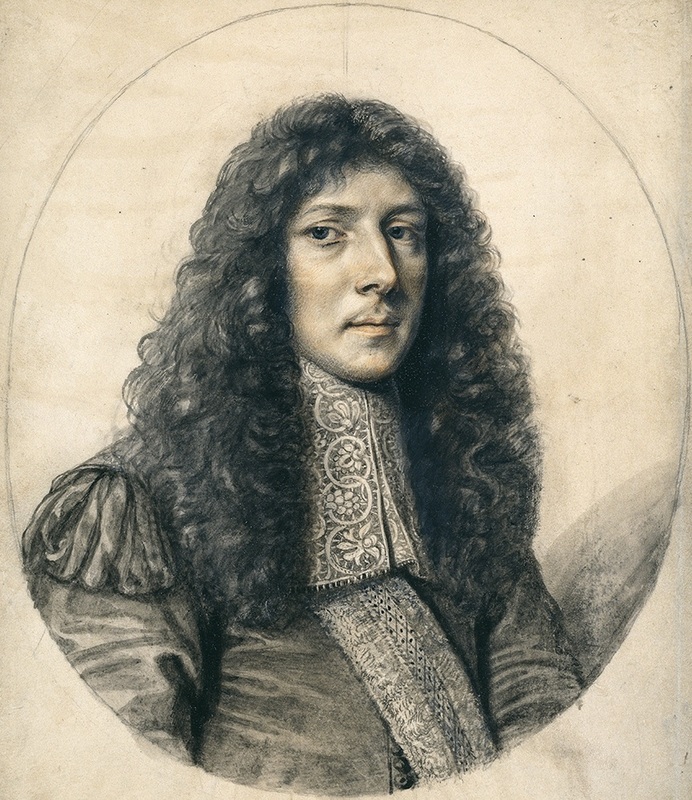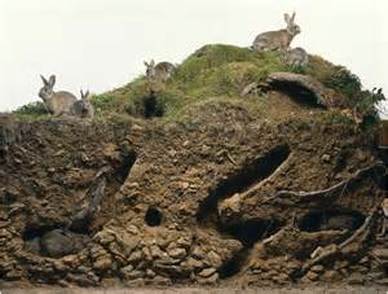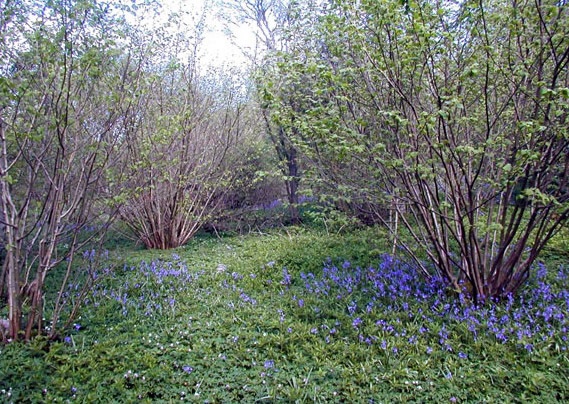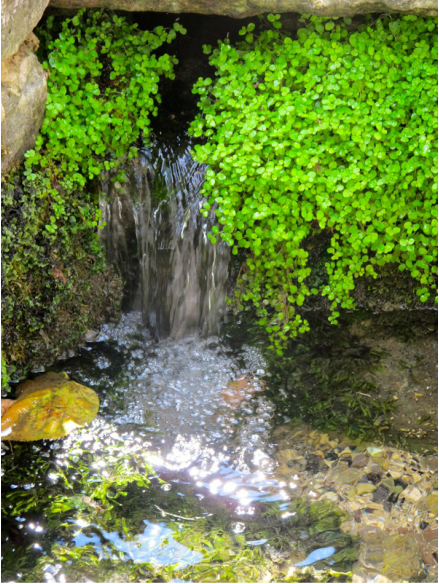John Aubrey's Box Alan Payne January 2016
|
John Aubrey was the first historian ever to write about Box. He was a local man, born at Easton Pierse (near Chippenham) in 1626, and he went to school at Leigh Delamare. He was an early archaeologist and was famous for the discovery of the Avebury stone monument. He was a prolific author and in the years after 1656 he wrote two important books describing local people and places in North Wiltshire called The Natural History of Wiltshire and The Topographical Collections.[1]
Obviously there are no photographs of the area from these times but we can use Aubrey's writings to build up a picture of life locally and the issues that concerned residents in Box in the years before and after the English Civil War. Aubrey was outspoken about the people he knew; deferential to his superiors and defamatory about inferiors and he loved to gossip. He had his own way of putting down anything he disapproved of, Curious the learning of this. But we should not ignore his comments because his is the first contemporary report of Box village that exists. We know that Aubrey visited Hazelbury Manor in 1660-61 and his comments about the village are unique. |
Importance of Wildlife
Aubrey describes a local abundance of wildlife that formed part of everyday needs: Strawberries in Colern woods exceedingly plentifull... The poor children gather them, and sell them to Bathe; but they kill the young ashes, by barking them to make boxes to put them in..... Dwarf-elder (ebulus) at Box etc common enough... The juice of ebulus turnes haire black; and being mingled with bull’s fatt is Dr. Buller’s remedie for gowte.....Bitter-sweet (dulcamara), with a small blew flower, plenty at Box.
Aubrey describes a local abundance of wildlife that formed part of everyday needs: Strawberries in Colern woods exceedingly plentifull... The poor children gather them, and sell them to Bathe; but they kill the young ashes, by barking them to make boxes to put them in..... Dwarf-elder (ebulus) at Box etc common enough... The juice of ebulus turnes haire black; and being mingled with bull’s fatt is Dr. Buller’s remedie for gowte.....Bitter-sweet (dulcamara), with a small blew flower, plenty at Box.
|
Without refrigeration, small animals and birds were a staple food source. Hares were native. Rabbits, introduced centuries before by the Normans, provided food and fur for clothing and were extremely useful because they could be bred on poorer soils.[2] Pheasants were introduced in the middle ages; partridge, larks, cranes and woodcock were native.
Rabbits and hares were prized for both their meat and their fur. Aubrey reported rabbit conies at Auburn, Wiltshire the best, sweetest, and the fattest of any in England and Tis a saying, that conies doe love rost-meat. |
Aubrey comments that fish were a source of food for many. In the gravelly stream at Slaughterford are excellent troutes.
The eeles at Marleborough are incomparable. Crayfish are plentiful at Salisbury and in the Avon at Chippenham. In the North Avon are carpes; Tenches are common; Salmon are sometimes taken in the Upper Avon.
The eeles at Marleborough are incomparable. Crayfish are plentiful at Salisbury and in the Avon at Chippenham. In the North Avon are carpes; Tenches are common; Salmon are sometimes taken in the Upper Avon.
Woodland
Wood was a vital part of life because it provided building material, fuel source, and was the basic repair for farm implements.[3] Woodland was intensively farmed on a commercial basis and carefully controlled by men such as Michael Woodward at Colerne who was a local warden from 1659 and 1675.[4] He personally supervised the coppicing of trees; he gave permission for the gathering of firewood (topp and lopp); marked trees for felling and sale; and allowed tenants to cut certain trees for house repairs and to construct barns, cart sheds and cowhouses.
In Aubrey’s time, woodland was perceived to be in decline and the rights of common tenants to be absorbed by the enclosure of their rights. Aubrey records the distress of the people of Pewsham in Chippenham caused by deforestation and enclosure in a much-quoted passage: When Chipnam stood in Pewsham’s wood, before it was destroyed, a cow might have gone for a groat a year, but now it is deneyed. Of course, deforestation has become significantly worse over subsequent centuries but commoners' right to graze animals in forest land was a serious issue when there were few jobs to earn a living and smallholding farming and woodland harvesting was a necessary means of survival.
Wood was a vital part of life because it provided building material, fuel source, and was the basic repair for farm implements.[3] Woodland was intensively farmed on a commercial basis and carefully controlled by men such as Michael Woodward at Colerne who was a local warden from 1659 and 1675.[4] He personally supervised the coppicing of trees; he gave permission for the gathering of firewood (topp and lopp); marked trees for felling and sale; and allowed tenants to cut certain trees for house repairs and to construct barns, cart sheds and cowhouses.
In Aubrey’s time, woodland was perceived to be in decline and the rights of common tenants to be absorbed by the enclosure of their rights. Aubrey records the distress of the people of Pewsham in Chippenham caused by deforestation and enclosure in a much-quoted passage: When Chipnam stood in Pewsham’s wood, before it was destroyed, a cow might have gone for a groat a year, but now it is deneyed. Of course, deforestation has become significantly worse over subsequent centuries but commoners' right to graze animals in forest land was a serious issue when there were few jobs to earn a living and smallholding farming and woodland harvesting was a necessary means of survival.
|
Water Supplies
In the 1600s most people relied on spring water and wells because of an absence of domestic running water. Aubrey’s writings emphasise the importance of clean water before twentieth century sanitary improvements. His book describes the area as full of springs medicinall, mineral waters for drinking or bathing and springs with healing or putrefying qualities. The hot mineral springs of Bath were already well frequented in Aubrey’s time and he reviews the area for others. At Pulshutt the well does presently become a deepe claret colour. Near Lavington, Devizes, is a good salt spring. The springs are described as vitriolate, iron water, salt springs and petrifying. Aubrey refers to a spring in Box: Dr Guydot sayes the white sediment in the water of North Wiltshire is powder of freestone; and he tells me that there is a medicinall well in the street at Box, near Bathe, which hath been used ever since about 1670.[5] Water drawn from wells was often impure and contributed significantly to infection. Disease struck the village 20 years earlier than the Great Plague in London. |
In the Parish Register of 11 April 1646 Dorothie Bolwell, and her mother a fortnight later, are recorded as dying of the plague in Kingsdown. Altogether twenty people were killed in the parish by 13 June of that year. It was worst at Wormcliffe where in May 1646 Richard Mansell, his son, wife and infant child all died: of the sickness, being buried nigh unto the house to stop the infection spreading in the village.[6]
Earning a Living
Aubrey wrote about the ability of dairy farmers in North Wiltshire: hereabout is but little tillage (arable) or hard labour, they only milk the cows and make cheese; they feed chiefly on milke meats, which cooles their braines too much, and hurts their inventions (makes them dull).[7] Aubrey’s comments are more accurate than they seem at first because pastoral farming took less time than arable and local people undertook cloth manufacture in their spare time.
But it was stone quarrying rather than farming that made the area important. Aubrey wrote about Box's building stone: in which parish is our famous freestone quarre of Haselbury. By Aubrey’s time, Hazelbury quarries were in decline as the open-caste seams had been exhausted: The quarre at Haselbury was the most eminent for freestone in the western parts before the discovery of the Portland quarrie, which was but about 1600.[8]
Aubrey is depicting a world which was deferential to tradition and the local authorities of the manor house, parsonage and the Justices of the Peace. It was a society that changed quickly because it had no answers to the instability which was overtaking it.
It was a society before the emergence of a new order based on the local authority of the parish vestry and village self-determination.
Earning a Living
Aubrey wrote about the ability of dairy farmers in North Wiltshire: hereabout is but little tillage (arable) or hard labour, they only milk the cows and make cheese; they feed chiefly on milke meats, which cooles their braines too much, and hurts their inventions (makes them dull).[7] Aubrey’s comments are more accurate than they seem at first because pastoral farming took less time than arable and local people undertook cloth manufacture in their spare time.
But it was stone quarrying rather than farming that made the area important. Aubrey wrote about Box's building stone: in which parish is our famous freestone quarre of Haselbury. By Aubrey’s time, Hazelbury quarries were in decline as the open-caste seams had been exhausted: The quarre at Haselbury was the most eminent for freestone in the western parts before the discovery of the Portland quarrie, which was but about 1600.[8]
Aubrey is depicting a world which was deferential to tradition and the local authorities of the manor house, parsonage and the Justices of the Peace. It was a society that changed quickly because it had no answers to the instability which was overtaking it.
It was a society before the emergence of a new order based on the local authority of the parish vestry and village self-determination.
References
[1] John Aubrey, The Natural History of Wiltshire, edited John Britton, David & Charles Reprint, 1969 and
John Aubrey, Wiltshire - Topographical Collections, edited Canon Jackson, The Wiltshire Archaeological and Natural History Society, 1862
[2] Michael Ashton and Carenza Lewis, The Medieval Landscape of Wessex, 1994, Oxbow Books, p.144
[3] Oliver Rackham, The History of the Countryside, 1986, JM. Dent & Sons Ltd
[4] Wiltshire Record Society, Vol 13
[5] John Aubrey, The Natural History of Wiltshire, p.24
[6] Parish Magazine April 1935
[7] John Aubrey, The Natural History of Wiltshire, p.11
[8] John Aubrey, The Natural History of Wiltshire, p.42
[1] John Aubrey, The Natural History of Wiltshire, edited John Britton, David & Charles Reprint, 1969 and
John Aubrey, Wiltshire - Topographical Collections, edited Canon Jackson, The Wiltshire Archaeological and Natural History Society, 1862
[2] Michael Ashton and Carenza Lewis, The Medieval Landscape of Wessex, 1994, Oxbow Books, p.144
[3] Oliver Rackham, The History of the Countryside, 1986, JM. Dent & Sons Ltd
[4] Wiltshire Record Society, Vol 13
[5] John Aubrey, The Natural History of Wiltshire, p.24
[6] Parish Magazine April 1935
[7] John Aubrey, The Natural History of Wiltshire, p.11
[8] John Aubrey, The Natural History of Wiltshire, p.42



